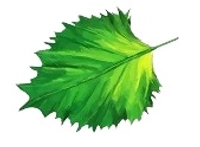Enhance Your Space with the Beautiful Syngonium Dwarf Plant
Transform your indoor space with the captivating Syngonium Dwarf Plant. Known for its unique arrowhead-shaped leaves and compact growth, this plant is perfect for adding a touch of greenery to any room. Native to tropical rainforests of Central and South America, the Syngonium Dwarf Plant is not only easy to care for but also brings several benefits to your indoor environment.
Indoor Benefits
- Air Purification: The Syngonium Dwarf Plant helps in purifying the air by removing harmful toxins such as formaldehyde and benzene, making your indoor environment healthier.
- Aesthetic Appeal: With its attractive green and white variegated leaves, this plant adds a splash of color and elegance to your home or office décor. Its compact size makes it ideal for small spaces, tabletops, and shelves.
- Stress Reduction: Indoor plants like the Syngonium Dwarf Plant have been shown to reduce stress and promote a sense of calm and well-being, making it perfect for living rooms, bedrooms, and workspaces.
- Humidity Regulation: This plant can help maintain optimal humidity levels in your home, which is beneficial for your skin and respiratory health, especially in dry or air-conditioned environments.
Plant Care Instructions
- Light: Place your Syngonium Dwarf Plant in bright, indirect sunlight. It can tolerate low light conditions, but for optimal growth, indirect light is best.
- Watering: Water the plant when the top inch of soil feels dry. Ensure the pot has good drainage to prevent waterlogging. Reduce watering during the winter months.
- Soil: Use a well-draining potting mix rich in organic matter. A mix designed for indoor plants or houseplants is ideal.
- Humidity: The Syngonium Dwarf Plant thrives in moderate to high humidity. Mist the leaves regularly or place the plant on a humidity tray if your indoor environment is dry.
- Temperature: Keep the plant in a temperature range of 60-80°F (15-27°C). Avoid placing it near cold drafts or direct heat sources.
- Fertilizing: Feed the plant with a balanced liquid fertilizer every 4-6 weeks during the growing season (spring and summer). Reduce feeding in fall and winter.
Common Problems and Solutions
- Yellowing Leaves: This can indicate overwatering or underwatering. Adjust your watering schedule to keep the soil consistently moist but not waterlogged.
- Brown Leaf Tips: Low humidity or excess salts in the water can cause leaf tips to turn brown. Increase humidity levels or use distilled water for watering.
- Pests: Look out for common pests like spider mites and aphids. Treat infestations promptly with insecticidal soap and regularly check the plant for signs of pests.
- Slow Growth: Insufficient light or lack of nutrients can cause slow growth. Move the plant to a brighter location and ensure regular feeding during the growing season.
Please Note: Images are for reference purposes only. Actual product may vary in shape or appearance based on climate, age, height, etc. The product is replaceable but not returnable.
